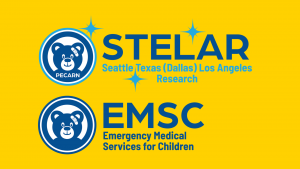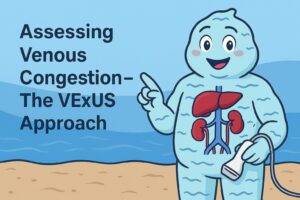Author: Brit Long, MD (@long_brit, EM Attending Physician, San Antonio) // Edited by: Alex Koyfman, MD (@EMHighAK, EM Attending Physician, UTSW / Parkland Memorial Hospital)
Welcome to EM@3AM, an emDocs series designed to foster your working knowledge by providing an expedited review of clinical basics. We’ll keep it short, while you keep that EM brain sharp.
A 24-year-old male presents with bilateral arm, shoulder, and proximal leg pain after a new workout with plyometrics and body weight exercises. His urine is also dark brown. VS are normal, and physical exam is unrevealing.
What is the patient’s diagnosis? What’s the next step in your evaluation and treatment?
Answer: Rhabdomyolysis
Rhabdomyolysis results from muscle breakdown and necrosis, leading to elevation in creatine kinase (CK) levels and myoglobinuria.
Types:
– Trauma or muscle compression (immobilization, crush syndrome)
– Nontraumatic exertional (exercise with hot weather/sickle cell/hypoK, hyperkinetic state such as seizure/stimulant use/NMS)
– Nontraumatic nonexertional (drugs/toxins, infection, inflammatory myopathy, endocrine)
Pathophysiology: Skeletal muscle injury => intracellular contents leak into plasma => electrolyte abnormalities/acidosis (incr K/uric acid/phos, decr Ca/albumin => incr phos/Ca later); cardiac dysrhythmias; AKI/renal failure (not well understood; up to 1/3 of adults); dehydration; compartment syndrome; DIC; respiratory failure.
Common risk factors: Excessive muscular activity / immobilization with external compression; prescribed meds (antipsychotic / BZDs / statin / salicylate / antihistamine); illicit drugs (EtOH / opioids / cocaine / amphetamines / PCP / LSD / caffeine); infection (viruses, bacteria); trauma (fractures / compartment syndrome / crush / burns); metabolic disturbance (low K/phos/Na); heat stroke; inherited metabolic disorder (especially in recurrent episodes).
Presentation: Consider in patients with generalized weakness / myalgias or stiffness / significant pain out of proportion to exam / dark urine; keep on differential for your AMS/unconscious patient. Musculoskeletal symptoms are not always present. Nausea, vomiting, and abdominal pain can occur if severe. Uremic encephalopathy also may result in AMS.
Ancillary testing to consider: CBC, renal function, LFTs, uric acid, coags, CK (5x upper limit of normal), EKG, DIC panel, UA (+blood with few or no RBCs)
Normal CK is 20-260 U/L. These levels rise within 12 hours of injury, with peak 1-3 days. Levels decline 3-5 days after injury. Peak CK level may be associated with renal failure, especially levels > 5000.
Management: ABCs; identify etiology and address it; IVF resuscitation (maintain UOP 200-300 mL/hr – total amount not well-defined) / correct electrolytes (focus on high K); loop diuretics / urinary alkalinization (controversial, but may be considered in cases with CK > 5000, crush injury, increasing CK and urinary pH < 6.5) / mannitol (may worsen oliguria and dehydration) / acetazolamide / antioxidants (controversial); hemodialysis PRN.
Complications: Renal failure, hyperkalemia, hypocalcemia (early stages), hypercalcemia (recovery), DIC, compartment syndrome, nerve injury.
Patients may be discharged if otherwise healthy and no comorbidities, exertional rhabdomyolysis, and decreasing total CK. Other patients should be admitted.
References:
Huerta-Alardín AL. Bench-to-bedside review: Rhabdomyolysis — an overview for clinicians. Crit Care. 2005
Melli G. Rhabdomyolysis: an evaluation of 475 hospitalized patients. Medicine (Baltimore). 2005
de Meijer AR. Serum creatine kinase as predictor of clinical course in rhabdomyolysis: a 5-year intensive care survey. Intensive Care Med. 2003
Mikkelsen TS. Prognostic value, kinetics and effect of CVVHDF on serum of the myoglobin and creatine kinase in critically ill patients with rhabdomyolysis. Acta Anaesthesiol Scand. 2005
Palevsky P. Prevention and treatment of heme pigment-induced acute kidney injury (acute renal failure). UpToDate. 2015









2 thoughts on “EM@3AM – Rhabdomyolysis”
Pingback: Quick review of rhabdomyolysis – Austin-Travis County EMS System Office of the Medical Director
Pingback: Rabdomiólise – Emergência Rules